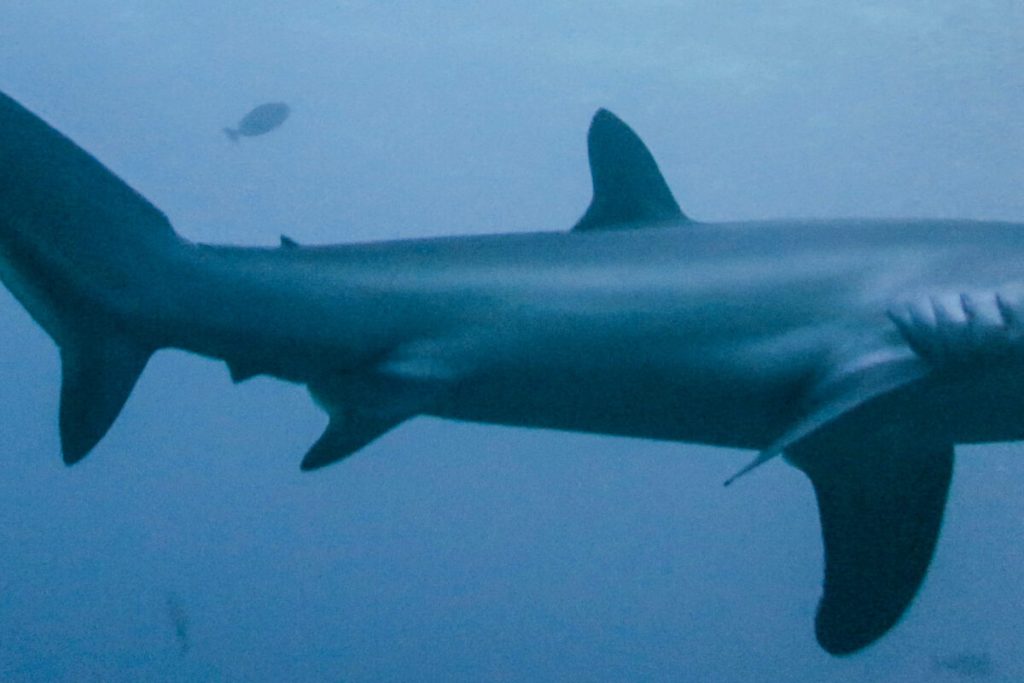- A conservation effort in eastern Indonesia helped reduce thresher shark catches by 91% among participating fishers by providing alternative income opportunities, according to a recent study.
- The program, which ran from 2021 to 2023, supported nine voluntary fishers with resources to transition to new livelihoods, leading to increased income for some, though a few struggled due to personal challenges and job instability.
- However, some fishers felt pressured by family or community expectations to continue shark fishing, and conflicts with local leaders also influenced participation.
- The study highlights the need for long-term conservation efforts that involve local communities, address socio-political challenges and receive strong government support.
JAKARTA — A thresher shark conservation effort in eastern Indonesia focusing on alternative sources of income has reduced up to 90% of catches of the globally endangered species, a new study shows.
For decades, the pelagic thresher shark (Alopias pelagicus) has been a primary target for small-scale fishing communities in Alor Archipelago of Indonesia’s East Nusa Tenggara province for decades, sustaining subsistence livelihoods and serving as a protein source. However, this shark’s population across the Indo-Pacific has dwindled 50-79% over the last three generations, with Indonesia — as the world’s largest shark fishing nation — seeing severe declines of an estimated reduction of up to 83%.
A group of researchers and conservationists from Indonesia and the U.K. recently published their study showing that implementing zero thresher fishing coupled with bottom-up livelihood-based conservation intervention lowered shark catches by 91% among participating fishers compared with non-participants. The participants also experienced increases in their income, in some cases by 5.2 times relative to the income before the intervention.
“The rationale behind safe-guarding manta rays and whale sharks lies in their non-extractive value, notably from tourism (…) In contrast, pelagic threshers continue to be valued as an extractive fisheries resource, particularly for their fins and meat, which are consumed locally,” Rafid A. Shidqi, a Ph.D. student at Duke University and co-founder of Thresher Shark Indonesia who is the lead author, wrote in the paper published Feb. 11 in the journal Oryx.

The conservation effort took place between 2021 and 2023 in Ampera and Lewalu villages with nine voluntary participants out of 27 local pelagic thresher fishers, with the participating group earning an average of 2.4 million Indonesian rupiahs ($150) per month. Prior to that, the researchers had conducted in-depth interviews and collected recommendations from multiple stakeholders to design the intervention. They had also partnered with local authorities in thresher shark protection and carried out community outreach, training and campaigns.
The researchers tested the impact of the livelihood program on thresher shark conservation by comparing the average monthly shark catches between participants and a group of non-participants. They assessed livelihood outcomes by comparing the monthly income reported by participant fishers before and during the program, as they couldn’t collect income data from non-participants or other fishers.
From August 2021 to November 2023, participants made up 33% of the fishers but caught only 9% of the thresher sharks, contributing 29 of the total 332 shark catches, the paper read. In exchange for resources to help participants transition to new livelihoods — such as fishing boats, engines, equipment and business startup capital — they agreed to stop catching thresher sharks, receiving the capital in four installments while the project team closely monitored its use.
“Zero catches were recorded for participant fishers during the first 18 months; however, there was a resurgence during the final 8 months of the intervention, with fishers stating they were driven by economic hardship and socio-political pressures,” the paper’s authors wrote.
The paper noted that three fishers saw their income drop after switching jobs, mainly due to personal issues like illness and family responsibilities that made it hard for them to fully commit to their new work. Another reason for the income difference was the stability of their new jobs, it said. Businesses on land turned out to be more profitable and consistent, while fishing for tuna and red snapper was less predictable and depended on the season.
Meanwhile, some fishers reported pressure from their families or peers to continue shark fishing. The most experienced shark fishers in the villages, who had contributed to the decline of thresher sharks, chose not to switch jobs — not because they opposed shark conservation, but due to personal conflicts with the village leader or other community members, the study said.
“Understanding and resolving these underlying human–human conflicts would have enabled a more inclusive process, with substantial benefits to thresher shark conservation,” the paper stated.

The findings in the paper have provided important insights to expand the understanding of complex shark conservation in Indonesia, particularly by showing the effectiveness of income-based interventions to reducing catches of threatened shark species, said Iqbal Herwata, focal species conservation senior manager at Konservasi Indonesia who was not involved in the research but reviewed the study per Mongabay’s request.
In Indonesia, most shark meat is dried, salted or smoked before being sold to retailers or restaurants. These products then enter a supply chain with little international regulation. As the world’s top shark-catching country, Indonesia exports various shark products, including fins, liver oil, meat and skin. The country is also home to more than 200 of the world’s 1,250 shark species, which live in its reefs and deep waters.
Iqbal noted that many government policies on fisheries management focus on large-scale industrial fishing but overlook small-scale fishers who make up the majority in Indonesia and put a lot of pressure on endangered species. He said the study emphasized the importance of involving local communities in conservation efforts, especially when endangered species have economic value for them.
“This study not only enriches the portfolio of successful conservation practices in Indonesia but also provides an evidence-based conservation model that can be replicated in other regions, particularly for species that remain largely unprotected yet continue to face exploitation, such as the thresher shark,” Iqbal told Mongabay.
Until 2023, the whale shark was the only fully protected shark species in Indonesia. That changed when the government granted full protection to six species of walking sharks, making it illegal to catch, keep or trade them. Other sharks and rays are strictly regulated under Indonesian law and international agreements like CITES. To trade these species, sellers need official approval, and exporting them requires special permits and must follow government-set quotas.
In 2018, Indonesia’s Ministry of Marine Affairs and Fisheries introduced a rule requiring fishers to get licenses for catching sharks and to track their catch. However, with nearly 2.5 million fishers and a massive fishing fleet, many sharks and rays are still caught without proper registration.
Iqbal added that another key takeaway from the study was that conservation should not be seen merely as a technical effort or a short-term project but as a long-term process that required intensive support and strong partnerships with resource-dependent communities.
He called on local governments, being the closest to the social and cultural realities of coastal communities, to take a central role in promoting community-based interventions tailored to local characteristics, including mapping economic needs and alternative livelihoods, facilitating training programs and establishing strong local institutions.
“Provincial and national governments can strengthen these efforts through budget allocations, regulatory support and the integration of conservation programs into regional and marine development plans,” he said.

Basten Gokkon is a senior staff writer for Indonesia at Mongabay. Find him on 𝕏 @bgokkon.
See related reporting:
Clock ticks on Indonesia shark skinners as predator population plunges
Citations:
Shidqi, R. A., Sari, D. R., Alopen, J., Bang, Y. M., Arianto, I., Kopong, P. N. S., … Booth, H. (2025). Designing and evaluating alternative livelihoods for shark conservation: a case study on thresher sharks in Alor Island, Indonesia. Oryx, 1–12. doi:10.1017/S0030605324001376
FEEDBACK: Use this form to send a message to the author of this post. If you want to post a public comment, you can do that at the bottom of the page.








